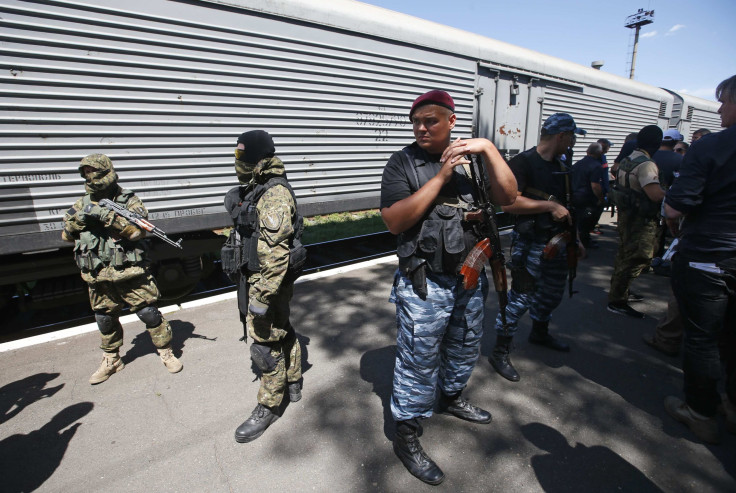Refrigerated Train Carrying MH17 Crash Victims' Remains Arrives in Kharkiv, Next Stop Netherlands

After nearly a week of delays and mistreatment, the remains of the victims of Malaysia Airlines Flight MH17 arrived in Kharkiv, a Ukrainian-government controlled city, Tuesday to the relief of crash investigators and the international community.
A five-car train hauling three refrigerated wagons storing 282 of the 298 people killed in the disaster arrived at a weapons facility, where the remains will be unloaded and flown to the Netherlands. Ukraine has designated the Netherlands as the lead investigators in the crash, with Dutch citizens making up 193 of those killed. Dutch Prime Minister Mark Rutte previously told reporters he expects the bodies to arrive Wednesday morning, whereupon inspection of the remains will begin.
The treatment of the bodies has brought outrage throughout the world, with the crash occurring in rebel-controlled territory in eastern Ukraine. Pro-Russian separatists sifted through the bodies and plane’s luggage for days before the remains were unceremoniously loaded onto the refrigerated train cars. After the remains continued to sit on the train for another 24 hours, the caravan departed at 7 p.m. Monday local time but stopped again in the disputed city of Donetsk before leaving again at 3 a.m., a Ukrainian spokesman told the Guardian.
While the bodies are believed to be stored at a temperature between 0C and -5C, they had already spent more than 48 hours exposed to the elements, including stifling heat and rain, with inspectors telling reporters that many were greatly decomposed before the trains departed. International forensic experts were allowed to view the remains for the first time on Monday, four days after the crash took place.
© Copyright IBTimes 2024. All rights reserved.





















